North Ronaldsay Autumn 2022
16th April 2024
Lauren Evans
After really enjoying writing about Dante and I’s summer in Shetland and spring in Skagen, I’ve decided to ‘complete the set’ of writing about what we were up to in my year out of university. We spent early September to late November of 2022 on North Ronaldsay- an island that holds a special place in both of our hearts since Dante worked at the bird observatory on and off between 2019 and 2022, and I got into birding volunteering there in 2021.
Between the staff and volunteers at the observatory, we had a full census rota and the whole island was covered everyday. This can’t be said for every autumn on North Ron and the rarity totals reflect this. Although not an exceptional autumn elsewhere on the Northern Isles, 2022 proved to be outstanding on North Ronaldsay with no less than 17 BBRC birds found between August and November. Autumn totals of BBRC species fluctuate a lot on North Ronaldsay and this was the highest total in the most recent five year period; 5 BB rares were found in 2019, 16 in 2020, 7 in 2021, 17 in 2022 and 9 in 2023.
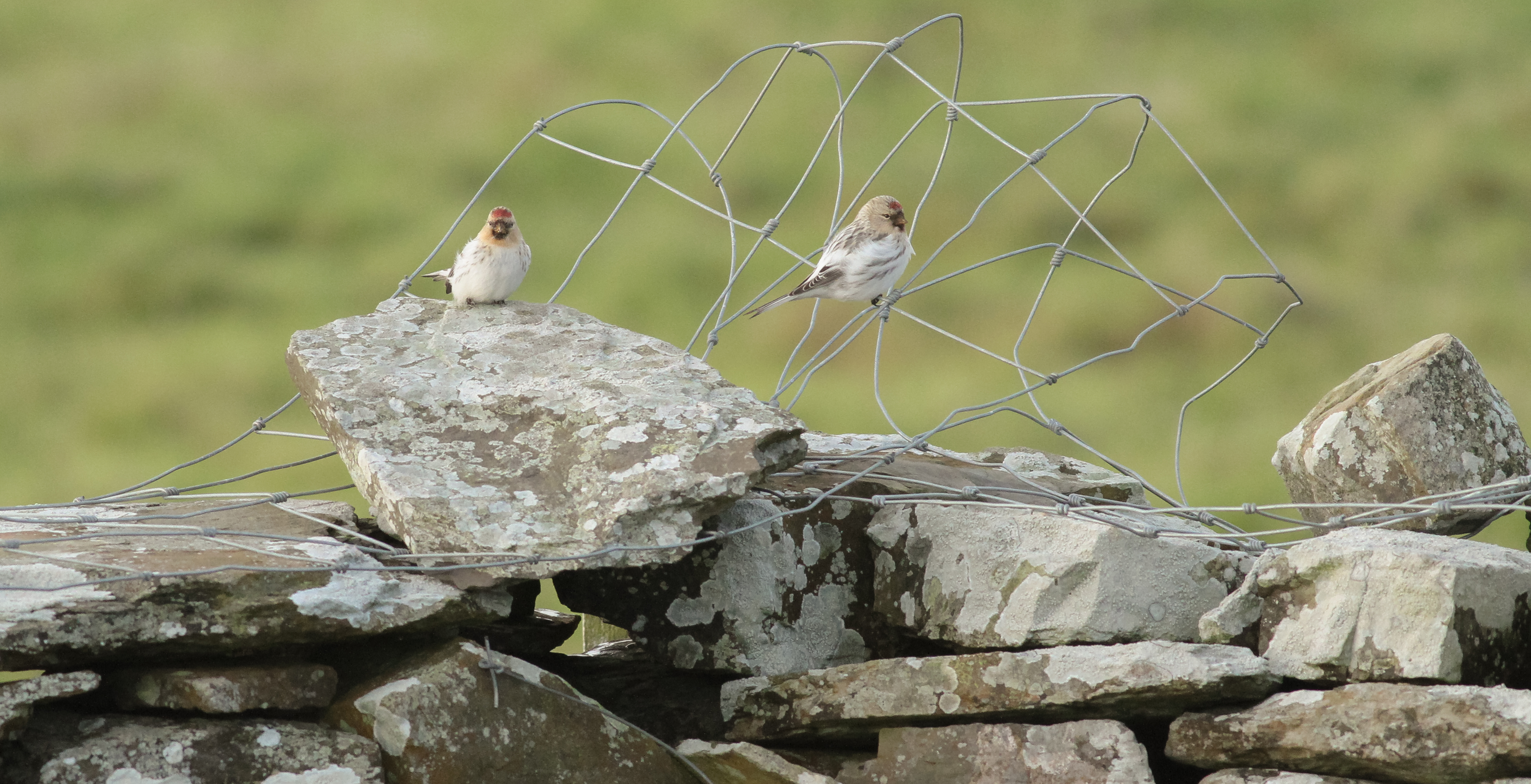
Hornemann’s Arctic Redpolls. Photo by Dante. 05/10/2022.
September:
We arrived on 13th September at the tail end of a fall of early autumn migrants. Before we’d even unpacked our bags, I was rushing off to Nether Linnay to see my first Little Bunting found by Tom Gale. We quickly got into the census, ringing and working at the observatory routine and it was brilliant to be back on the island where I’d first fallen in love with birding. On 21st September, Tom found a Long-billed Dowitcher on Ancum. It gave us all the run around for a few days proving to be mobile and elusive before it was finally seen by all the birders on the island. Only a few days later, Harry Witts found a White’s Thrush at Stenabreck. This was one of my most wanted species and, being one of the first to arrive at the scene, we had exceptional views of it perched nonchalantly on a dyke. Other great birds found throughout September included the first of the Hornemann’s Arctic Redpolls, Buff-breasted Sandpiper, Radde’s Warbler and Olive-backed Pipit.
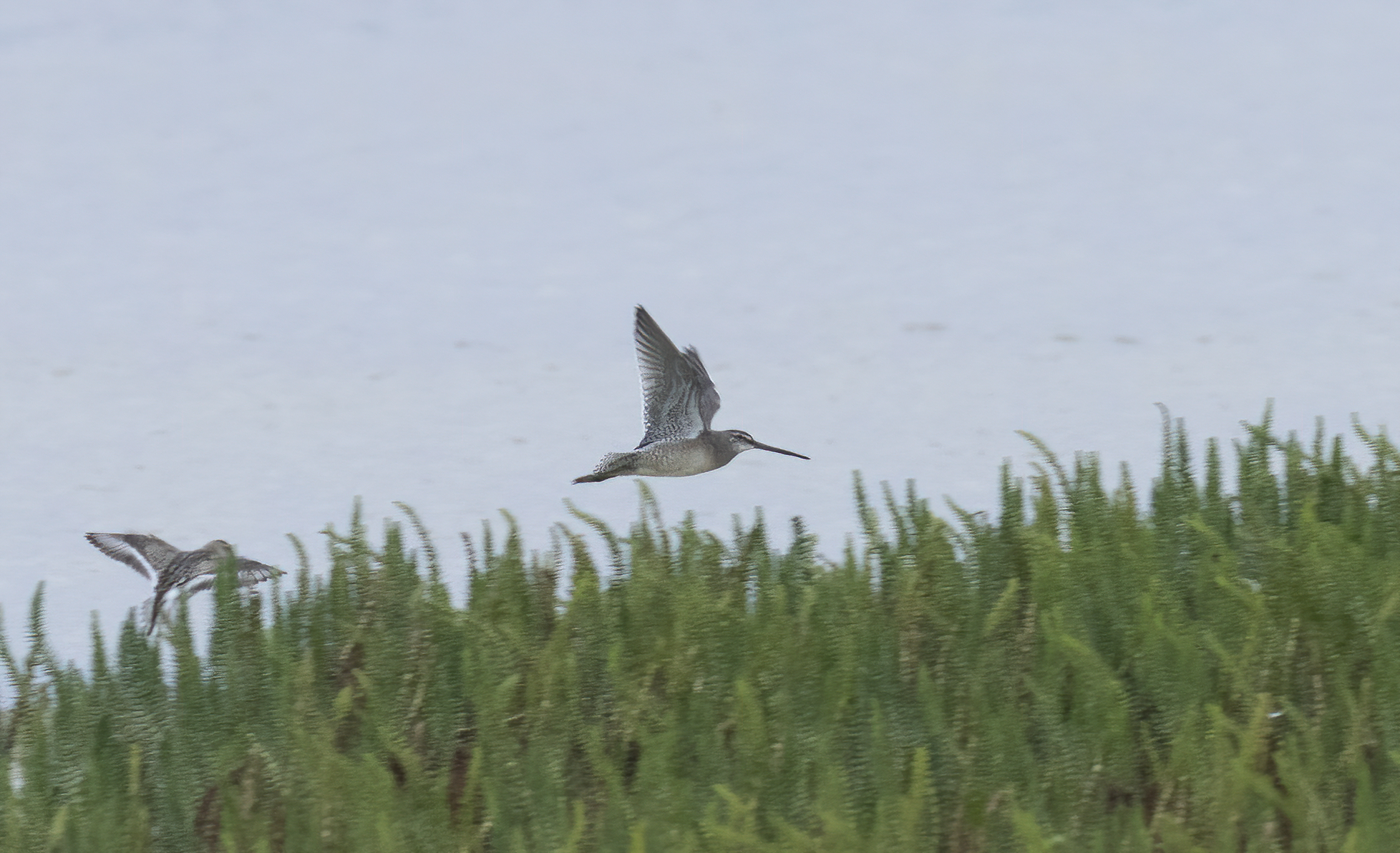
Long-billed Dowitcher. Found by Tom. Photo by George Gay. 21/09/2022.
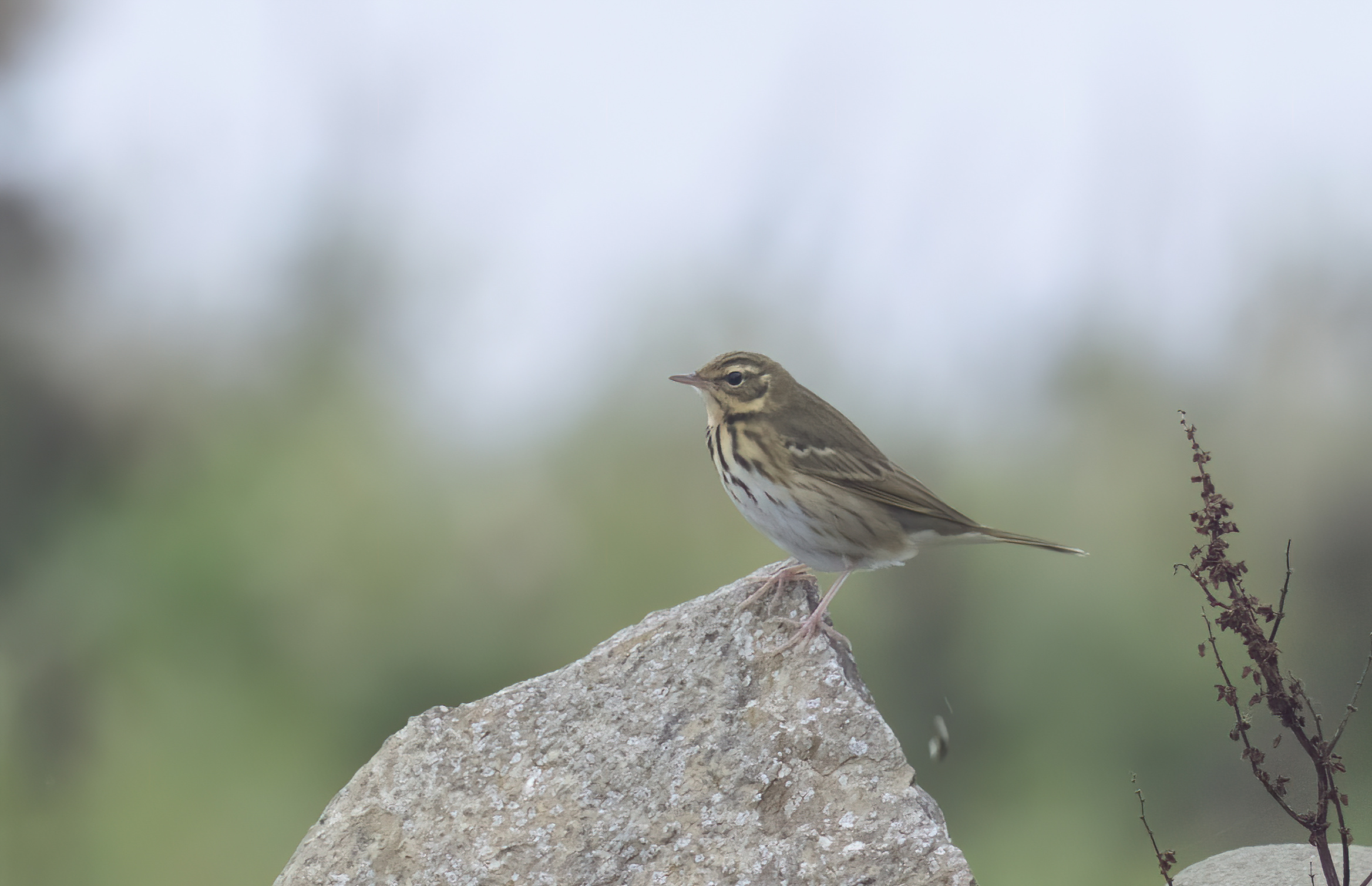
Olive-backed Pipit. Found by Hannah Coburn. Photo by George. 29/09/2022.
My favourite part of September, or the autumn as a whole, was the seawatching. Dante put in a heroic effort on the seawatching front, and stood watching from the beacon for the majority of our days on North Ron. The 18th was a day that will undoubtedly go down in North Ronaldsay history- the sea was watched from dawn till dusk and 17 Great Shearwaters flew northwest past Dennishead! Although nothing compared to Scilly, this is an outstanding number for North Ronaldsay and the views as they sheared past the beacon were incredible. The 19th saw at least 10,000 Fulmars past the beacon (although the day total would definitely be higher than this since there was a gap in the watching around midday). Perhaps more notable were the 149 Blue morph Fulmar including flocks of up to 8! The 27th September saw 846 Sooty Shearwaters past the beacon in another dawn-till-dusk seawatching effort.

Great Shearwater. Photo by Dante. 18/09/2022.
October:
October got off to a bang (if I do say so myself) when I flushed a Locustella warbler in a dense field of knee-high thistles, bracken and grasses. It provided only poor flight views and so I recruited the rest of the observatory team and together we managed to catch the bird in a monofilament net. I was absolutely thrilled when we identified it as a Lanceolated Warbler, a new species for me. It had a fat score of 3 indicating it had plenty of fat and had clearly been feeding well. After releasing the bird, it was only seen briefly once more in the field and proved extremely skulky. Incredibly, however, a second Lancie was found the next day by a visiting birder. This unringed individual showed much better and it was brilliant to see it running along the ground, like a mouse, as Lancies are famed for.

Lanceolated Warbler. Photo by Dante. 01/10/2022.
Days of strong westerlies don’t usually cause too much excitement in the Northern Isles and so the 4th October was not predicted to be anything special. However, a message from Paul Gay early on about a substantial movement of thrushes had us rushing out to see the fields carpeted in thrushes- mainly Redwing but with plenty of Fieldfare and Blackbirds mixed in. This was the first time I’ve seen a fall on this scale and the birds kept moving through all morning- I counted 1000+ Redwing in the south of the island alone.
The 23rd October turned out to be my favourite day of the autumn. I was ringing in Holland gardens in the morning and then dropped Dante off at the beacon for seawatching. I was just starting my census when I got a call from Dante- he’d just found a White’s Thrush on the scaffolding of the beacon! I must admit, at the time I was pretty jealous since the beacon was one of the first places I’d planned on checking but I’ve recovered now! The thrush was fairly flighty but it was still a fantastic, if bizarre, experience seeing it perched on scaffolding.
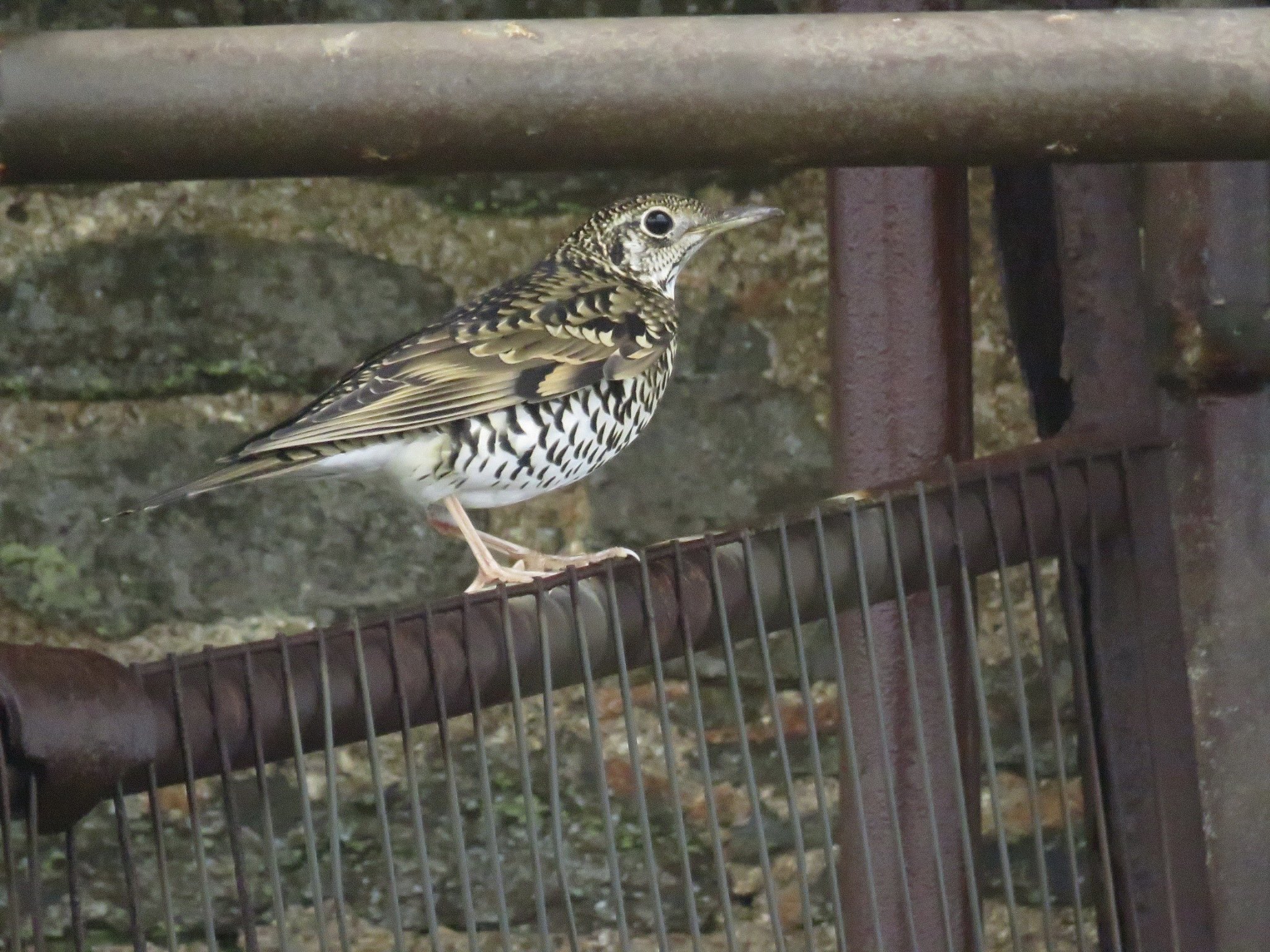
White’s Thrush. Found by Dante. Photo by Tom. 23/10/2022.
The majority of my census route that day was fairly quiet until I got to Bewan garden and spotted a Lesser Whitethroat feeding along the sheep fence. A combination of size, structure, plumage and call all pointed towards a Central Asian Lesser Whitethroat (Curruca curruca halimodendri). On our third day of trying, we managed to catch the bird and it dropped that all important feather for DNA identification. On Christmas Eve, we received confirmation from Martin Collinson at Aberdeen University that it was in fact halimodendri- an 11th record for Britain.
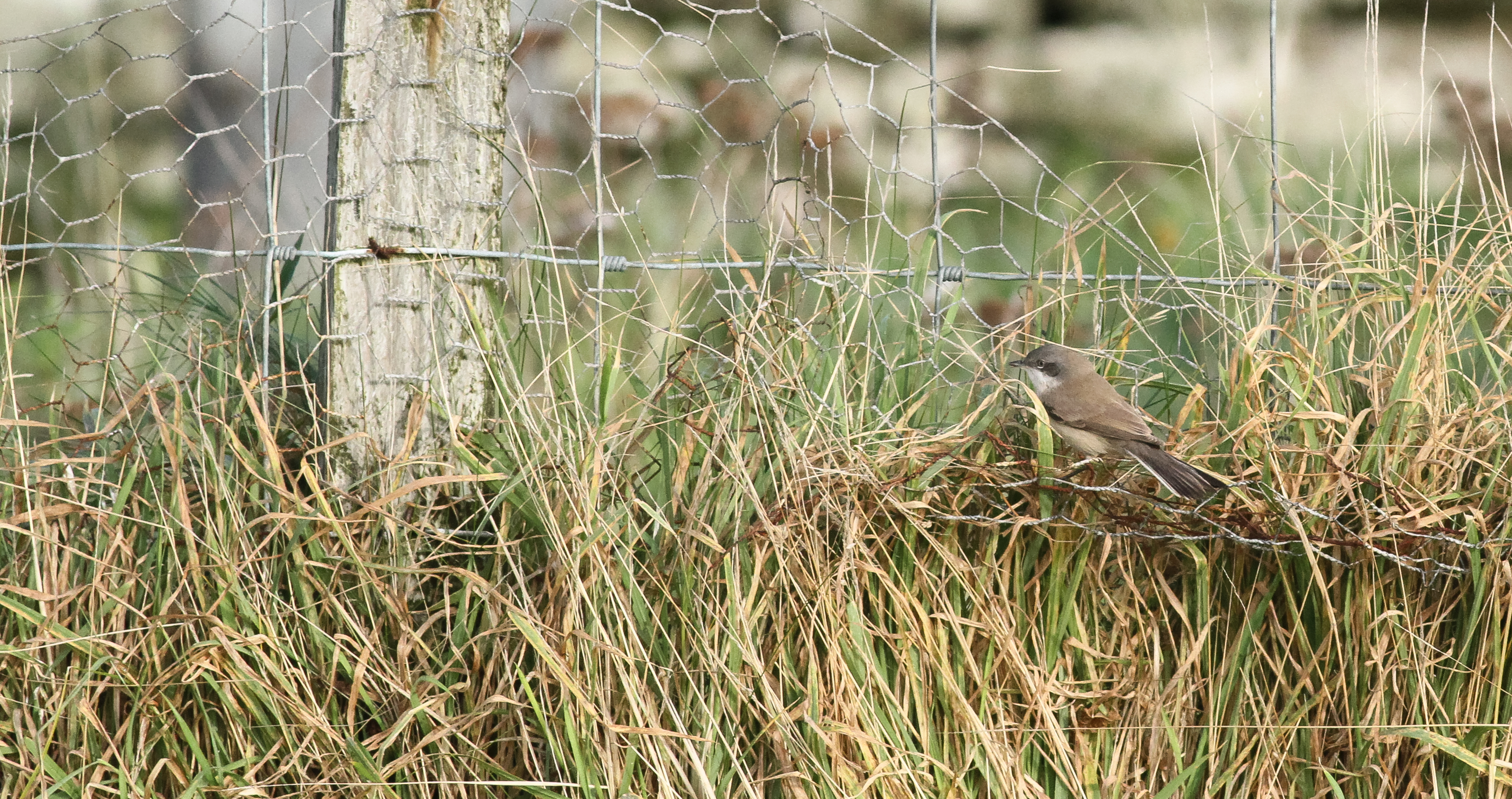
Central Asian Lesser Whitethroat. Photo by Dante. 23/20/2022.
Back to the 23rd October; whilst most of the obs crew were attempting to catch the Lesser Whitethroat, George received a call from Harry. He’d been heading to the beacon for the White’s Thrush and had just found an Eastern Black Redstart mere metres from the thrush. The bird showed brilliantly and was an incredible record- a first for North Ronaldsay and second for Scotland! It was almost unbelievable that these three ultra rare passerines had turned up within the same small area of Dennishead on the same day!
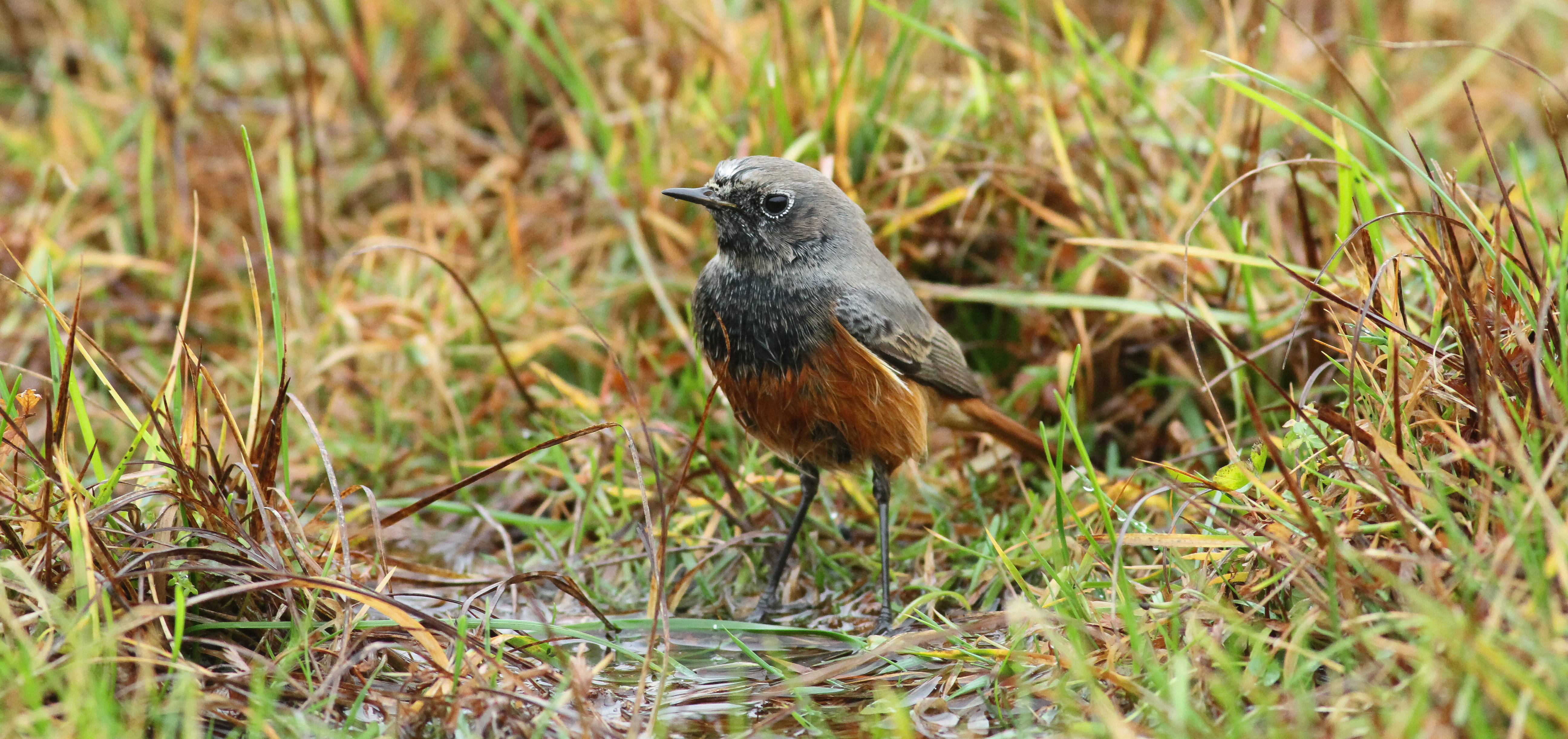
Eastern Black Redstart. Found by Harry. Photo by Dante. 23/10/2022.
October had too many great birds to write about each one individually. More Hornemann’s Arctic Redpolls were seen throughout the month, as well as a Red-throated Pipit, Hume’s Leaf Warbler, Great Snipe and a Subalpine Warbler sp. that, on catching, turned out to be an Eastern.

Great Snipe. Found by Tom. Photo by Ashley Saunders. 10/10/2022.
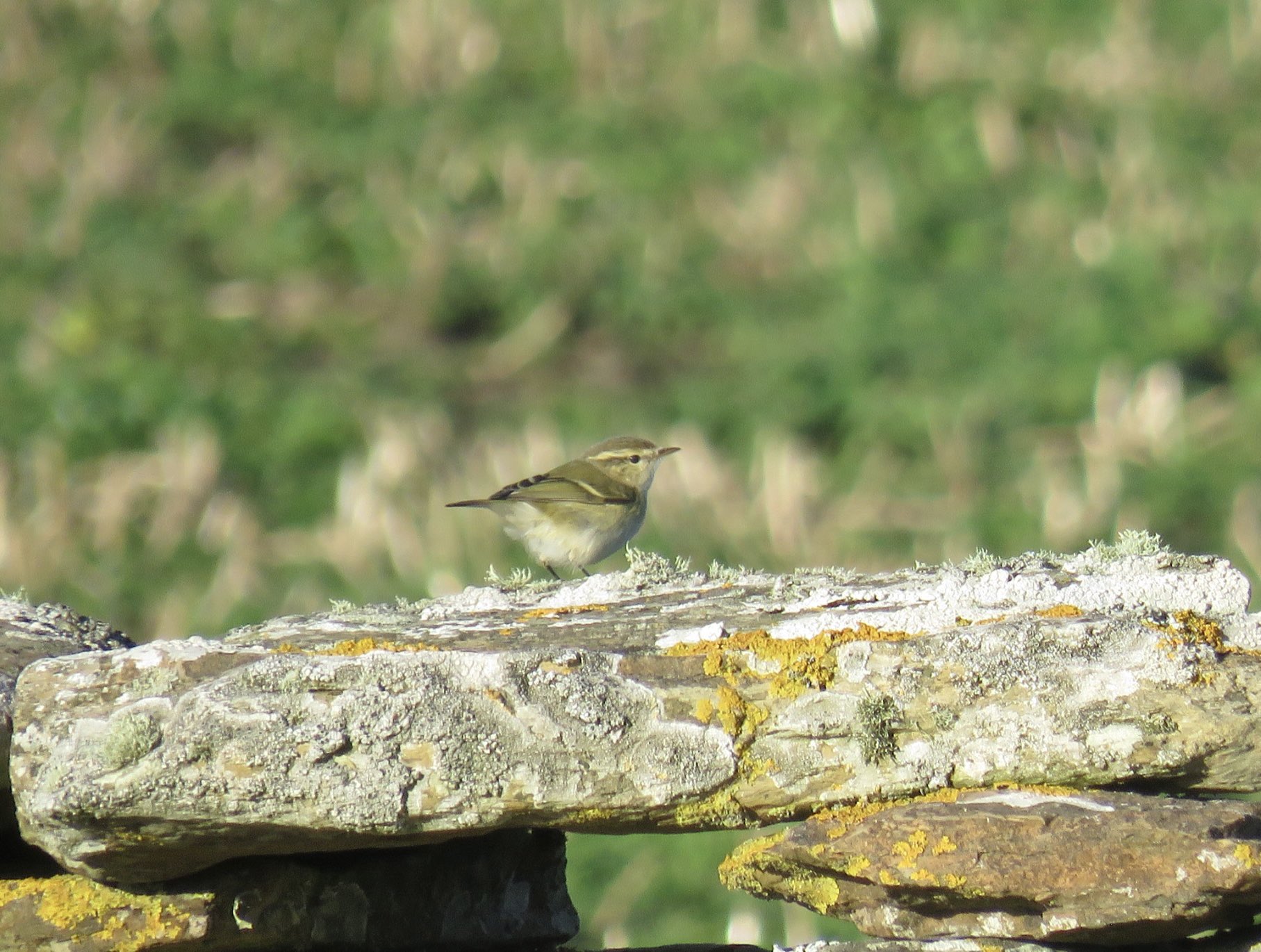
Hume’s Leaf Warbler. Also found & photographed by Tom. 29/10/2022.
November:
By the second week of November, all the observatory staff and volunteers had headed back down south and whilst Alison was away, Dante and I were the only birders left on the island. Although the days had gotten dramatically shorter and the weather far worse, we still enjoyed birding as much of the island as two people can manage. Days of strong easterly winds and storms meant there was plenty of late autumn movement. Within the first few days of November, Dante found an American Golden Plover right outside our house whilst I was standing right next to him counting Blackbirds! We experienced an influx of Woodcock in mid-November, we were basically tripping over them walking up the west coast, and there were still plenty of thrushes, Robins, Goldcrests and Blackcaps around.
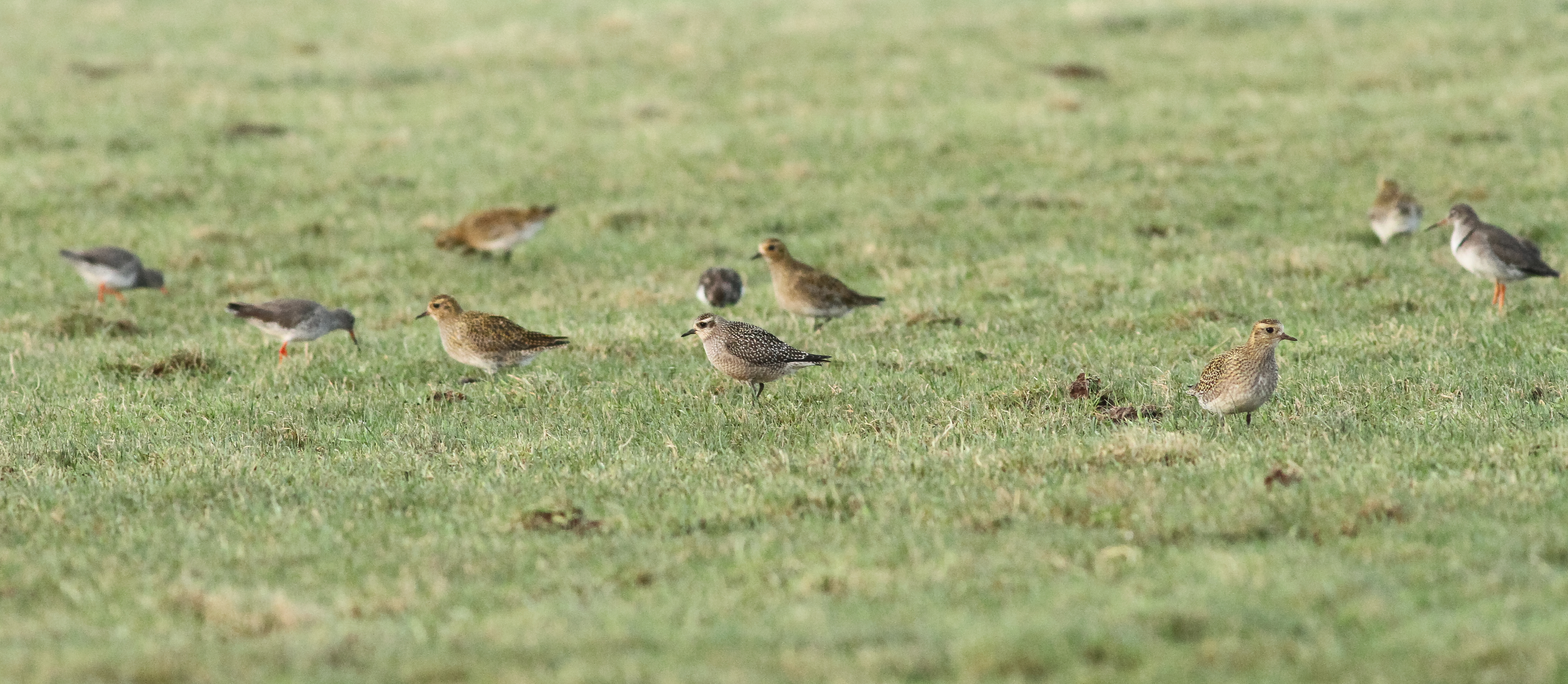
American Golden Plover. Found by & photo by Dante. 01/11/2022.
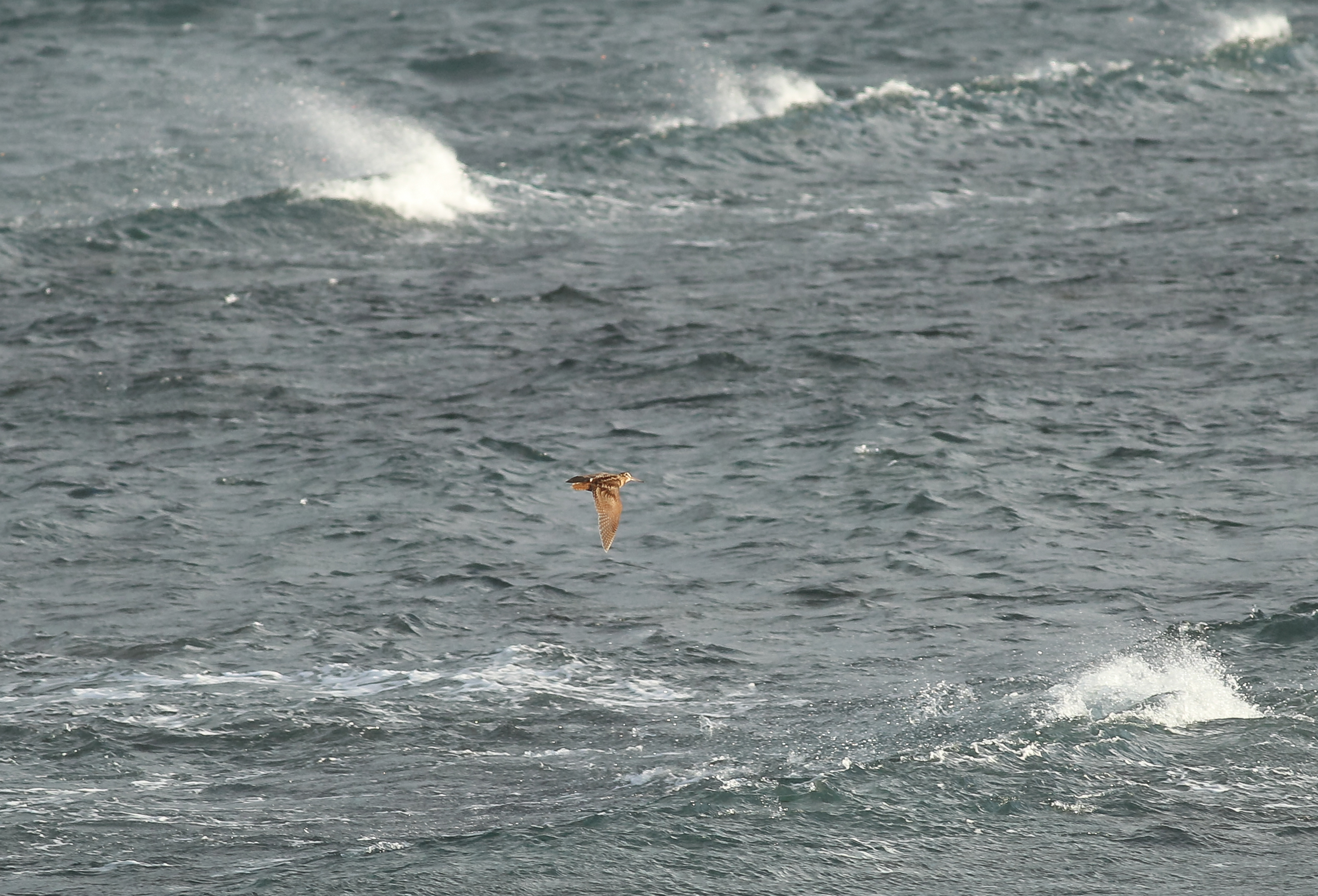
Woodcock over the sea. Photo by Dante. 21/11/2022.
On 9th November, Dante and I were checking the waders at Trinley Point, and I distinctly remember bickering about whether there were more Dunlin or Purple Sandpipers when a large thrush hopped past a gap in the dyke. We’d both only seen it out of the corner of our eyes before it disappeared and as we stepped around the corner we came face-to-face with a female Black-throated Thrush! The bird was feeding on the ground mere metres away and we had much better views than Dante’s photos suggest. The bird proved highly mobile and we only saw it once more perched on a dyke before it took off north and couldn’t be refound despite much searching. The Black-throated Thrush was a second island record and really confirmed the autumn wasn’t finished quite yet.

Black-throated Thrush. Photo by Dante. 09/11/2022.
Throughout November, we checked the gull flock at the North end most days. We had numerous juvenile Glaucous Gulls throughout the month and two adults and two third-winter Iceland Gulls. The highlight undoubtedly appeared on 18th November on a particularly wet and windy day. Scanning from the car, Dante and I both clapped eyes on a particularly white-headed first-winter bird at the front of the flock. It was a spectacular example of a first-winter Caspian Gull with a brilliant white, polarbear head, neat shawl and plenty of silvery replaced scapulars. It represented not only a first for North Ronaldsay, but a first for Orkney and is definitely the most exciting Casp I’ve ever seen.
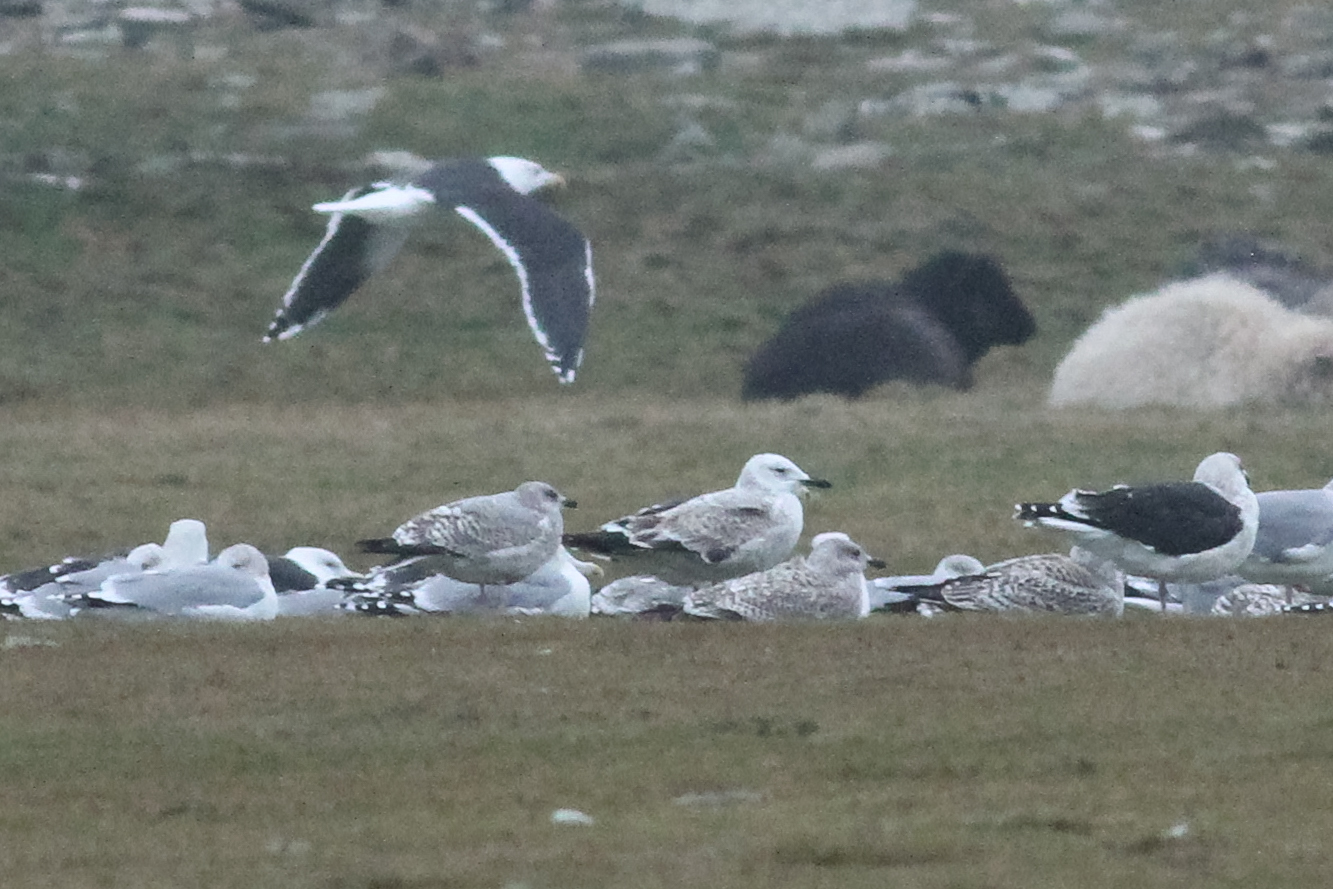
Caspian Gull. Photo by Dante. 18/10/2022.

Iceland Gull. Photo by Dante. 21/11/2022.
One of the last interesting migrants we saw on North Ronaldsay was a pale-looking Redpoll which I originally called out as a Hornemann’s. On closer inspection, we realised it was far too small for a Hornemann’s and somewhat resembled a Coue’s Arctic Redpoll (Acanthis hornemanni exilipes). We managed to get some good photos, including of the all-important undertail coverts and rump, and sent them to friends and Redpoll experts Dave Cooper and Brydon Thomason. The bird had plenty of pro-Coue’s structural and plumage features however, a bit too much streaking on the upper and undertail coverts has meant we’ve unfortunately had to leave it unsubmitted and unresolved.
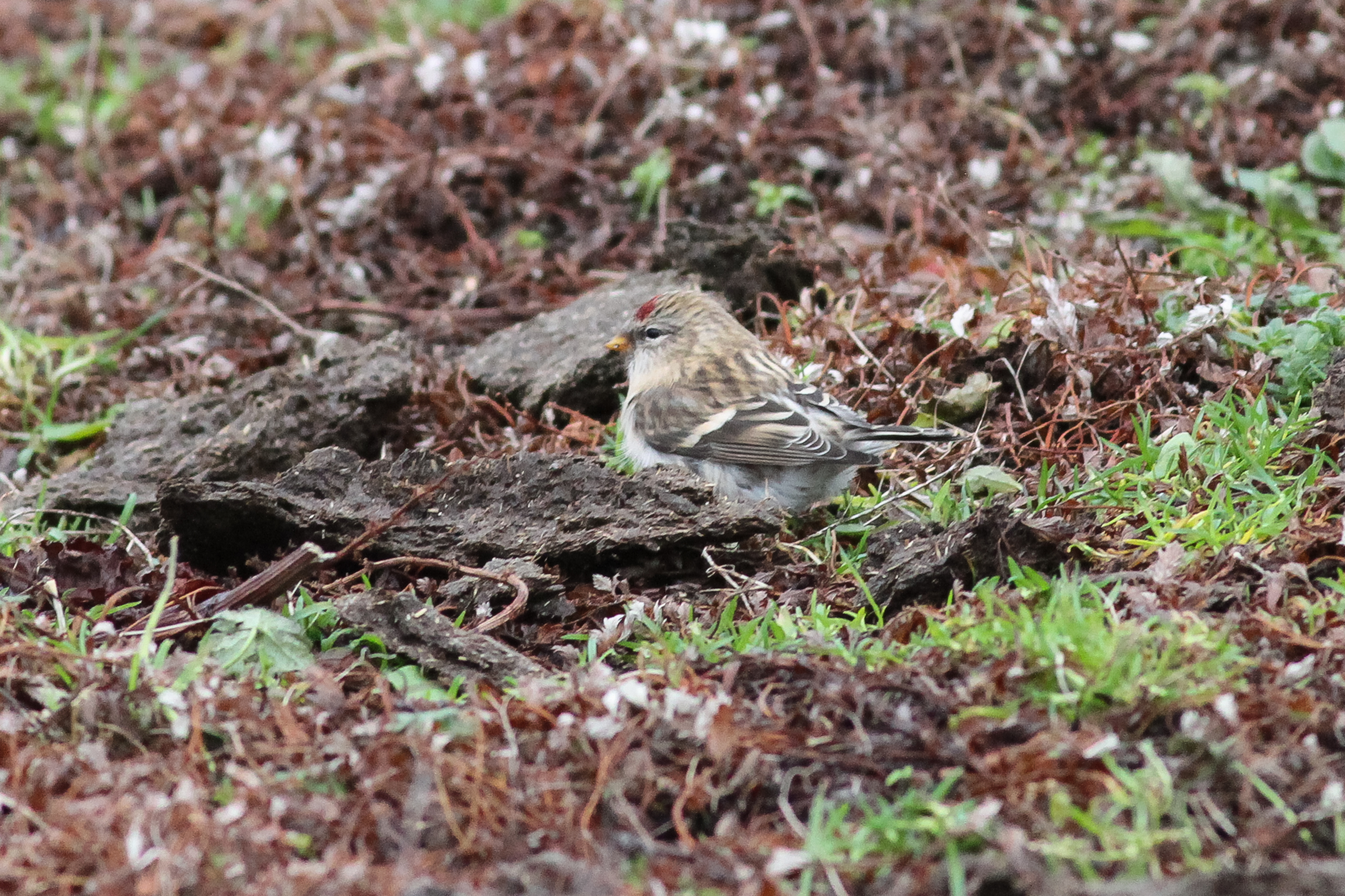
Possible Coue’s Arctic Redpoll. Photo by Dante. 22/11/2022.
Ringing:
I also had a great time ringing throughout the autumn, both mist-netting passerines in the gardens of Holland House and out dazzling around the island. I was lucky enough to see a number of new species in the hand including Siberian Chiffchaffs, Barred Warblers, Yellow-browed Warblers, Snow Bunting, Purple Sandpiper and Black-tailed Godwits. It was also amazing catching fair numbers of Brambing, Fieldfare and Redwing and unexpected catches in Holland Gardens included a Moorhen, Rock Pipit and very late November Rosefinch. My favourite period was towards the end of October and early November when huge numbers of thrushes would come to roost in Holland. As well as all the thrushes, we also caught a number of Long-eared Owls during this period- including 4 in one morning on 25th October and a Finnish control on the 21st November!
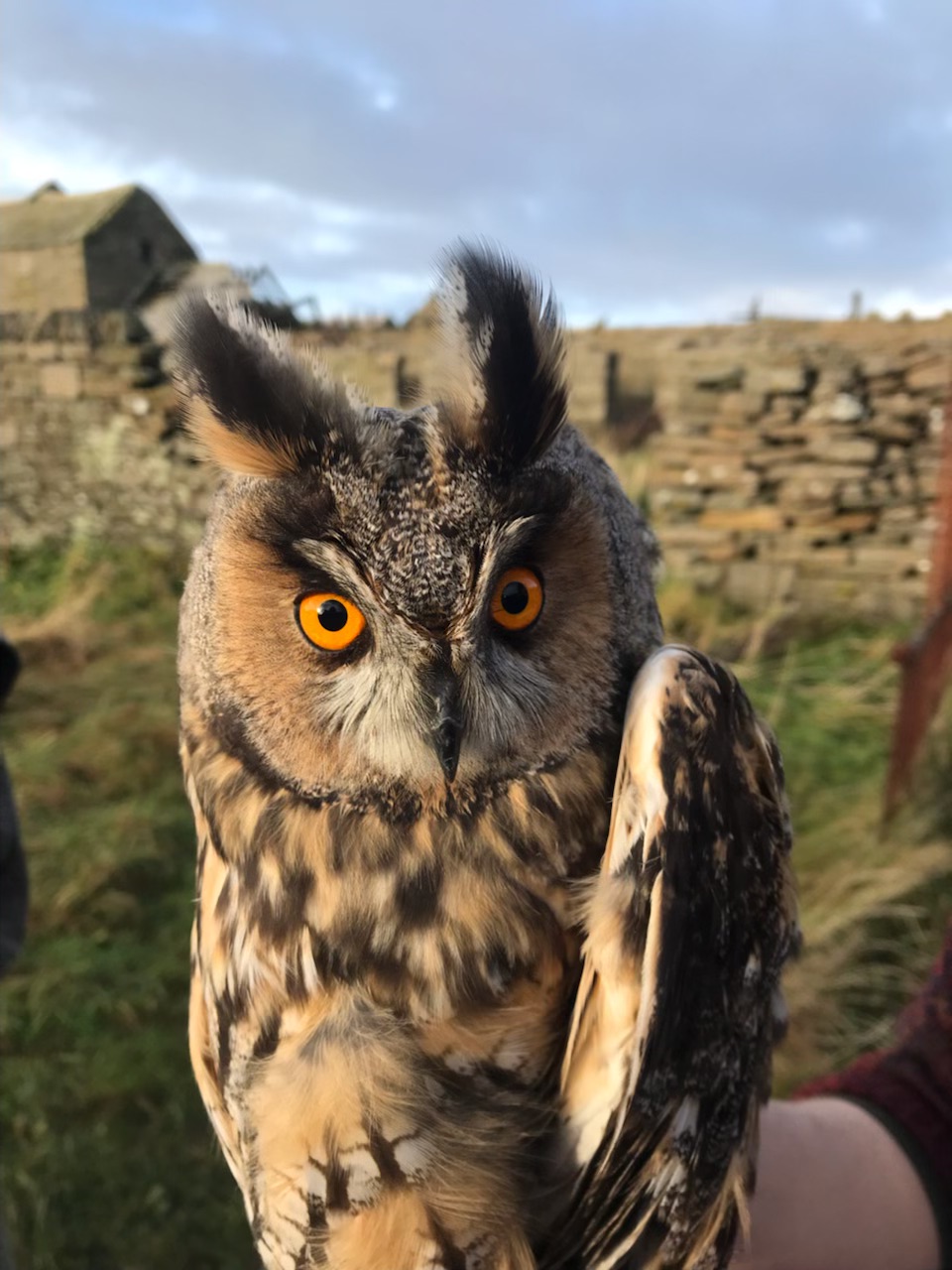
Long-eared Owl. 25/10/2022.
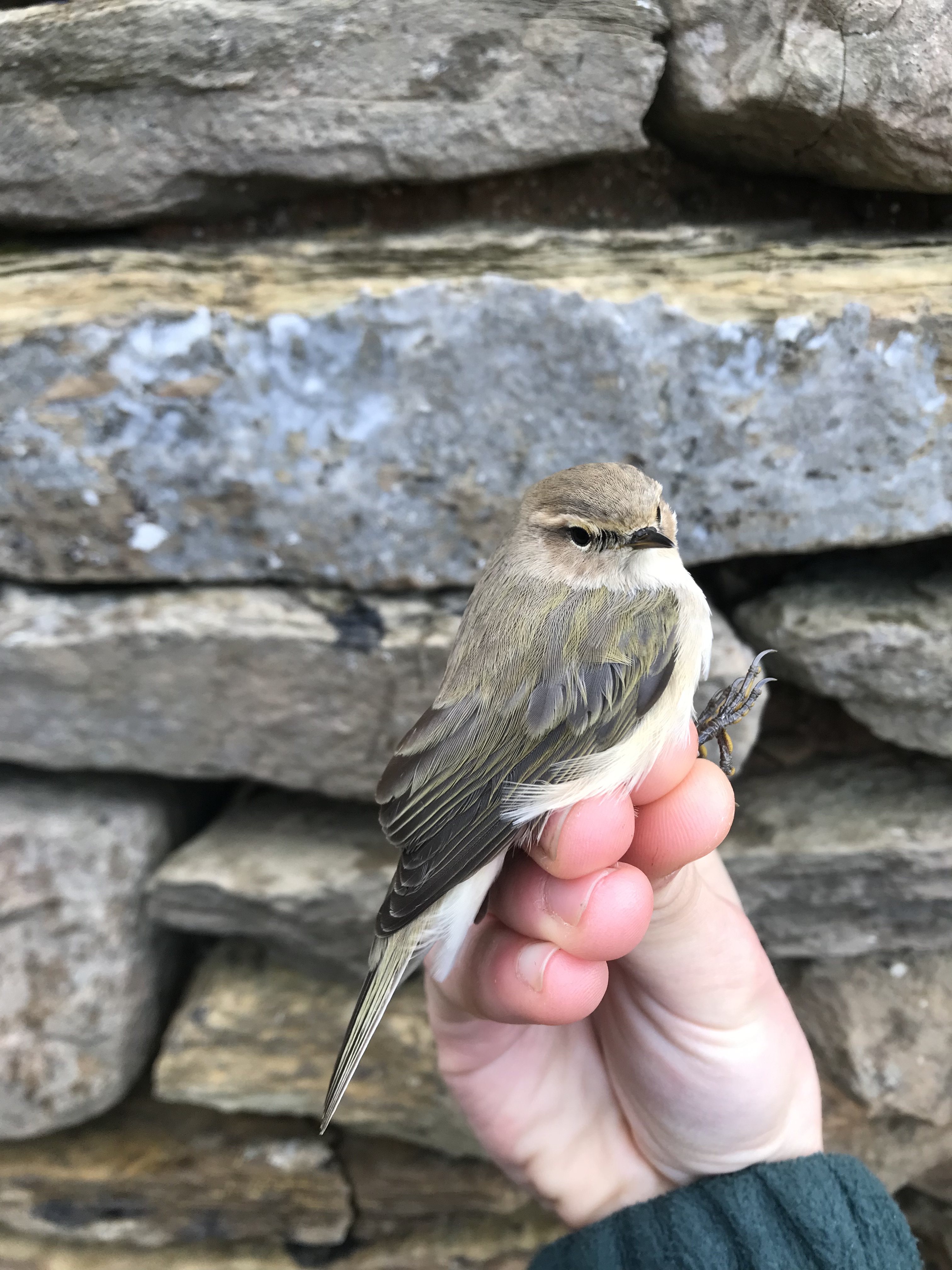
Siberian Chiffchaff. 01/10/2022.
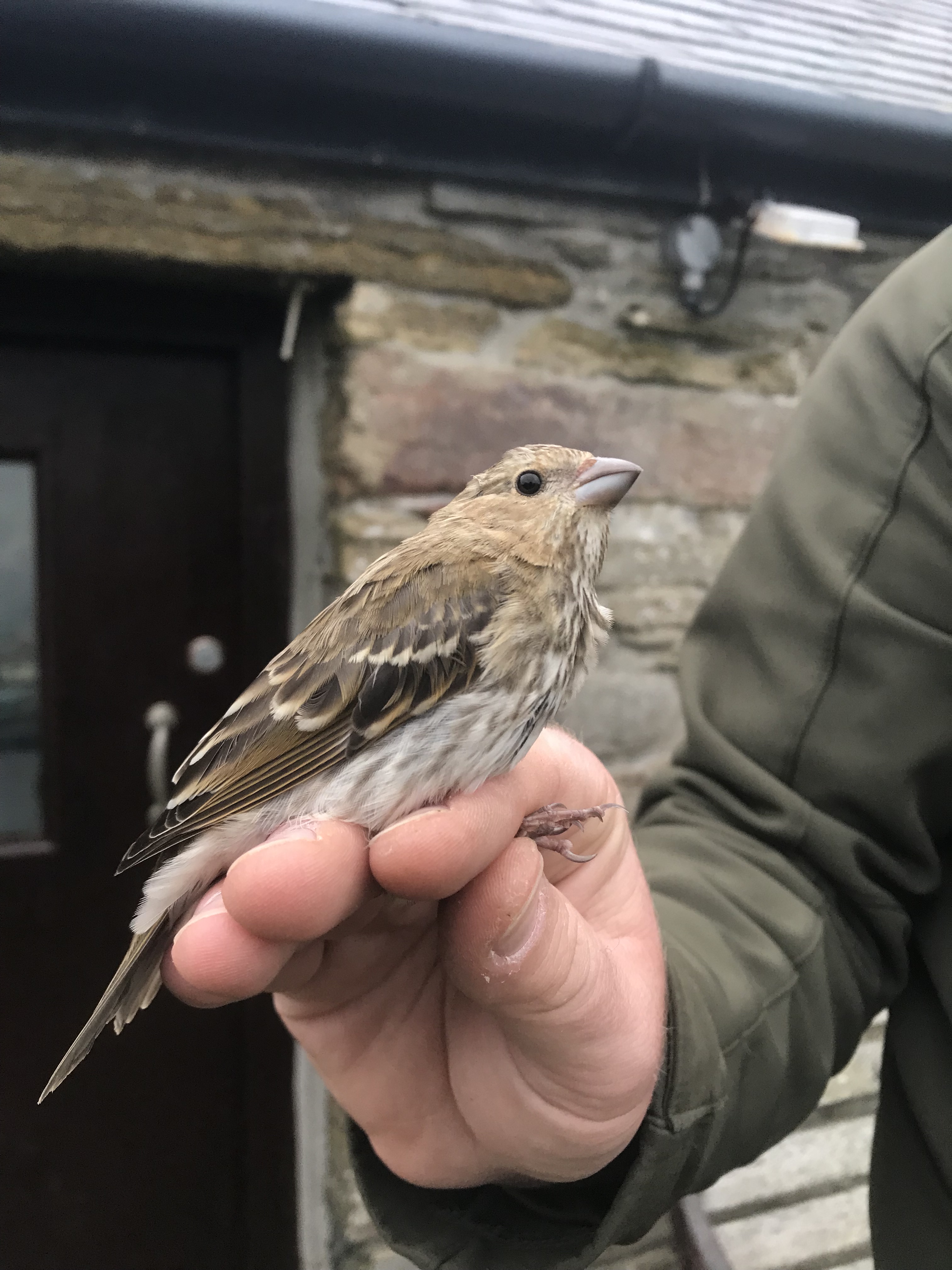
Common Rosefinch. 05/11/2022.
We headed back down south for a winter working in London in early December although we weren’t quite finished with Orkney birding just yet. On the North Ronaldsay-Kirkwall ferry we were treated to outstanding views of a winter plumage White-billed Diver sitting on the sea mere metres from the boat (unfortunately our cameras were locked in the car, a deck below!). We had the most fantastic autumn on North Ronaldsay and are extremely grateful to Caroline and Colin, as well as Alison, George and all the other volunteers at North Ronaldsay Bird Observatory for getting us involved with everything once again.
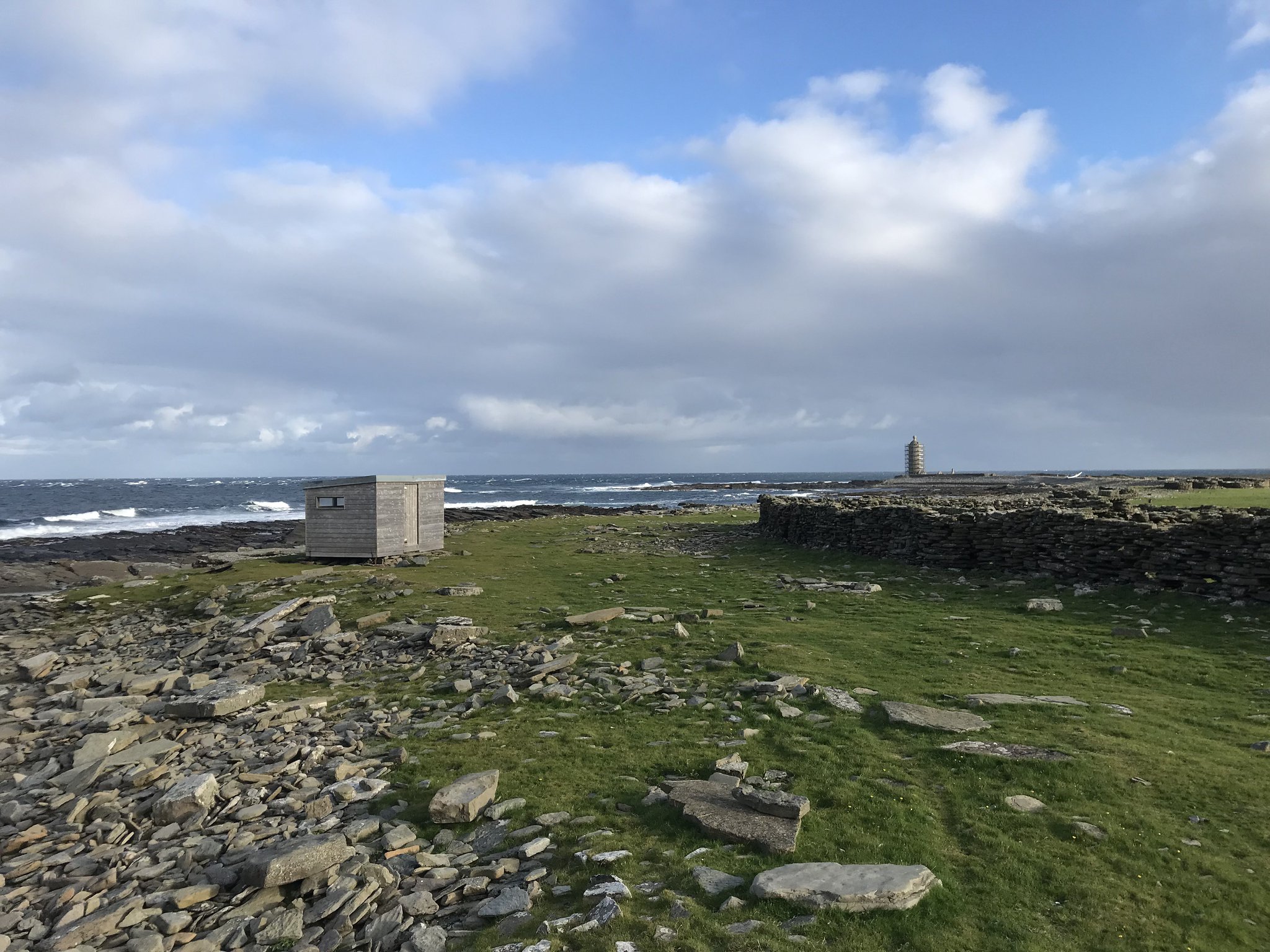
The seawatching hide with Bewan Loch and the beacon.